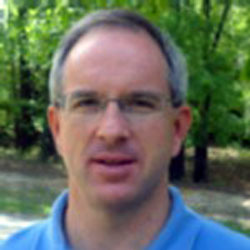
Eric Baumer, Allen E. Liska Professor of Criminology, received a National Institute of Justice Grant to conduct a research project titled “Assessing the Link between Foreclosure and Crime Rates: A Multi-level Analysis of Neighborhoods across Cities and Metropolitan Areas.”
Levels of foreclosure have increased substantially in many American communities during the past few years, leading to widespread speculation that they are or will soon yield higher rates of crime in their wake. Headlines across the nation have pointed to a possible link between foreclosure and crime, including claims that “As Foreclosed Homes Empty, Crime Arrives” (Washington Post, 2008), “Vacant homes send crime rocketing” (CNNMoney.Com, 2007), and “Squalor [and] crime follow wave of foreclosures” (Associated Press, 2007). Increasingly, representatives of the media, local law enforcement agencies, and others have been suggesting, or in some instances warning, that the substantial rising tide of foreclosures witnessed in the past few years in America has or is about to spark crime waves in both familiar and unfamiliar places, including well-established central cities and relatively new suburbs.
Baumer’s two-year program of multilevel research is designed to address some of the most significant gaps in current scientific understanding about the potential link between rates of foreclosure and crime. He and graduate student Kevin Wolff, who has been a major force behind the work, will be working with a FSU geography graduate student and additional criminology graduate students to address five central questions related to the recent acceleration in foreclosure rates across American neighborhoods and its possible impact on crime rates:
(1) Are levels of foreclosure significantly associated with crime rates across neighborhoods?
(2) Does any observed significant association persist when other factors are controlled, including attributes that capture the possible endogeneity of foreclosure activity to crime?
(3) Is the overall effect of foreclosure rates on neighborhood crime levels contingent on (i.e., moderated by) the nature of foreclosure activity?
(4) Is the overall effect of foreclosure rates on neighborhood crime levels contingent on other neighborhood conditions?
(5) Does the effect of foreclosure rates on neighborhood crime levels vary across cities and metropolitan areas in systematic ways?

